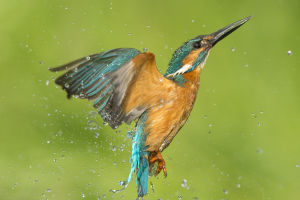Cats have long been known for their mysterious and independent nature. But could these enigmatic creatures be more in tune with our behaviours than we realize?
Recent studies and observations suggest that cats not only recognize human actions but can also imitate them to a surprising degree.
This revelation opens a fascinating window into the cognitive abilities of our feline friends and deepens our understanding of the human-animal bond.
The Science Behind Feline Recognition
For years, scientists have studied the extent to which animals can recognize and respond to human behaviour. However, cats, with their more aloof reputations, were often underestimated. Recent research has challenged this perception, indicating that cats possess a sophisticated level of social cognition.
A study by the University of Tokyo found that cats can recognize their owner's voice and distinguish it from that of strangers. This was demonstrated by an experiment where cats were played recordings of their owners calling their names, followed by recordings of strangers doing the same. The cats consistently showed more pronounced reactions to their owners' voices, indicating recognition.
From Recognition to Imitation
While recognizing human behaviour is impressive on its own, the question remains: can cats imitate humans? Observational studies and anecdotal evidence indicate that cats indeed engage in behaviours that mimic those of their human companions. For instance, many cat owners have reported pets imitating their routines, such as opening doors, turning on lights, or even flushing toilets. These actions, while seemingly trivial, demonstrate a level of learning and imitation that is quite extraordinary.
Research into imitation behaviours in cats is still in its early stages, but the implications are intriguing. Understanding the extent of this mimicry can offer insights into feline intelligence and social dynamics. It also suggests that cats may use imitation as a way to communicate and bond with their owners, blending their behaviours to fit in with the household dynamics.
Influential Case Studies and Anecdotes
Several notable case studies and anecdotes have brought attention to the phenomenon of feline imitation. One such case is that of a cat named "Nora," who gained internet fame for her piano-playing skills. Nora would sit at the piano and press the keys with her paws, mimicking the actions of her owner, a piano teacher. Videos of Nora playing the piano went viral, sparking curiosity and admiration worldwide.
Another fascinating example involves a cat named "Milo," who learned to fetch items on command. Milo's owner, a professional animal trainer, reported that the cat observed other animals being trained and began to mimic the behaviours, eventually excelling in tasks typically associated with dogs.
The notion that cats can recognize and imitate human behaviour reshapes our understanding of these complex and intelligent creatures. By delving into the science behind feline recognition and imitation, we uncover a new dimension of the human-animal bond that is both fascinating and heartwarming.


